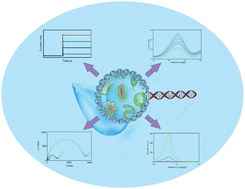Electrochemical nucleic acid biosensors: from fabrication to application
Abstract
Electrochemical biosensors have been around since the 1960s. They are among the most researched and applied biosensors. Their high portability and biocompatibility have seen them being used in the construction of in vivo biosensors. In the past three decades, their applications have been broadened from the detection of small molecules like glucose to nucleic acids and proteins. In particular, leveraging the specific base-pairing mechanism of nucleic acids, impressive progress has been achieved in the field of electrochemical nucleic acid biosensors. Moreover, various signal amplification strategies in conjunction with microfabrication technology have been extensively studied and have resulted in significant improvements in the sensitivity and multiplexing capability of electrochemical nucleic acid biosensors. In this article, the progress in the research and applications of electrochemical nucleic acid biosensors is reviewed with an emphasis on the principal components of electrochemical nucleic acid biosensors, their construction, sensing mechanism and technical applications with some discussion on challenges and perspectives.


 Please wait while we load your content...
Please wait while we load your content...